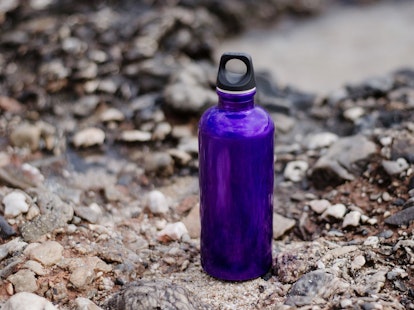SG 044.19
Effective 21st April 2019, any clothing including hats, gloves and swimwear, which makes a claim to protect the wearer’s skin from the sun will need to be CE Marked as personal protective equipment (PPE).
This may come as a surprise to retailers and consumers alike and will no doubt place an additional burden on the suppliers of these items who now must ensure that items with UPF claim values must also be labelled with the CE Mark before the April 21, 2019 deadline.
To label with the CE Mark, the producer must follow the procedures for doing so under the PPE regulations and create a Technical File containing all pertinent data and keep this file for 10 years. There is no requirement to involve a Notified Body in the certification of these items, as there is with Category II and III items, because they have been classified as Category I.
Regulation (EU) 2016/425:
Regulation (EU) 2016/425 was published in the Official Journal of the European Union on the 31 March 2016. This regulation repeals and replaces the PPE Directive 89/686/EEC The Regulation under Annex II now states;
“PPE designed to protect the skin against non-ionizing radiation must be capable of absorbing or reflecting the majority of the energy radiated in harmful wavelengths”.
Under PPE Regulation (EU) 2016/425 Guidelines section 16.6, “Skin protection against natural UV radiation - All garments, including partial or whole-body clothing, caps and helmets, gloves, and shoes, designed and manufactured to have specific UV-protective properties against natural UV radiation” are considered PPE Category I.
If the clothing is “designed and manufactured to have specific UV-protective properties against natural UV radiation” then this applies to your garment.
PPE Regulation - Regulation (EU) 2016/425 [ec.europa.eu]
PPE Guidelines - PPE Regulation Guidelines [ec.europa.eu]
Currently manufacturers and retailers in the UK and Europe are testing items according to EN 13758-1 and have been setting a UPF value of 40 or more as a minimum performance standard and a maximum of 5% UVA transmission for claims of UV protection as required by EN 13758-2. In order to fulfil the essential health & safety requirement to absorb or reflect the majority of harmful wavelengths, it is understood that the minimum requirements for UPF and UVA from EN 13758-2 satisfy this need.
The producer must create a technical file containing all of the relevant information (see below) and must ensure that labelling shows the CE Mark and provides the necessary information concerning the limitations of the protection
- “Sun exposure causes skin damage”
- “Only covered areas are protected”
- “The protection offered by this item may be reduced with use or if stretched or wet.”
as is required by EN 13758-2.
There is also the issue of repeated laundering on the protection level. The PPE Regulation requires that if the protection level is reduced by the cleaning process, then this information must be supplied with the product. To this end, it is strongly advised that the UPF performance is measured again after multiple wash cycles (e.g. 5 washes) so that any reduction of performance can be quantified. This information should then be communicated to the buyer in the information leaflet provided with the product.
It is important to note that garments such as swim and beachwear may not fulfil the requirements for body coverage specified in EN 13758-2, nevertheless where there is a claim of UPF, it must carry the CE Mark.
Because EN 13758-1 is not a harmonised standard, then item g) below will need to be implemented rather than item f).
For sun hats with a UPF claim, the national standard BS 8466 will need to be utilised, at least in the UK, as there is no similar European standard yet available.
Standards for guidance will need to be purchased from relevant websites.
The technical file must contain information to meet the below requirements.
- A complete description of the PPE and of its intended use
- An assessment of the risks against which the PPE is intended to protect
- A list of the essential health and safety requirements that are applicable to the PPE
- Design and manufacturing drawings and schemes of the PPE and of its components, sub-assemblies and circuits
- The descriptions and explanations necessary for the understanding of the drawings and schemes referred to in point (d) and of the operation of the PPE
- The references of the harmonised standards referred to in Article 14 that have been applied for the design and manufacture of the PPE. In the event of partial application of harmonised standards, the documentation shall specify the parts which have been applied
- Where harmonised standards have not been applied or have been only partially applied, descriptions of the other technical specifications that have been applied in order to satisfy the applicable essential health and safety requirements
- The results of the design calculations, inspections and examinations carried out to verify the conformity of the PPE with the applicable essential health and safety requirements
- Reports on the tests carried out to verify the conformity of the PPE with the applicable essential health and safety requirements and, where appropriate, to establish the relevant protection class
- A description of the means used by the manufacturer during the production of the PPE to ensure the conformity of the PPE produced with the design specifications
- A copy of the manufacturer's instructions and information set out in point 1.4 of Annex II
- For PPE produced as a single unit to fit an individual user, all the necessary instructions for manufacturing such PPE on the basis of the approved basic model
- For PPE produced in series where each item is adapted to fit an individual user, a description of the measures to be taken by the manufacturer during the fitting and production process to ensure that each item of PPE complies with the approved type and with the applicable essential health and safety requirements.
As well as the above, the manufacturer shall take all measures necessary so that the manufacturing process and its monitoring ensure compliance of the manufactured PPE with the technical documentation and with the applicable requirements of this Regulation.
A written EU Declaration of Conformity for the article is required and kept with the technical file.
(If the EU Declaration of Conformity is not to be included with each product then the internet address where it can be assessed should be included)
A Model Declaration of Conformity is Given in Annex IX to the Regulation:
- PPE (product, type, batch or serial number):
- Name and address of the manufacturer and, where applicable, his authorised representative:
- This declaration of conformity is issued under the sole responsibility of the manufacturer:
- Object of the declaration (identification of PPE allowing traceability; where necessary for the identification of the PPE, a colour image of sufficient clarity may be included):
- The object of the declaration described in point 4 is in conformity with the relevant Union harmonisation legislation: …
- References to the relevant harmonised standards used, including the date of the standard, or references to the other technical specifications, including the date of the specification, in relation to which conformity is declared:
- Where applicable, the notified body … (name, number) … performed the EU type-examination (Module B) and issued the EU type-examination certificate … (reference to that certificate).
- Where applicable, the PPE is subject to the conformity assessment procedure … (either conformity to type based on internal production control plus supervised product checks at random intervals (Module C2) or conformity to type based on quality assurance of the production process (Module D)) … under surveillance of the notified body … (name, number).
- Additional information: Signed for and on behalf of: … (place and date of issue): (name, function) (signature):
SGS Global Softlines has an extensive network of over 40 laboratories worldwide, with a strong team of committed professionals from multi-disciplinary backgrounds. Our internationally accredited state-of-the-art testing laboratories offer a comprehensive range of physical, chemical and functional testing services for components, materials and finished products. We help your company ensure quality, performance and compliance with international, industrial and regulatory standards worldwide. Discover more at www.sgs.com/softlines.
Louann Spirito
Consumer and Retail — Softlines
US & Canada Softlines Business Head
t: +1 973 461 7919
© SGS Group Management SA - 2019 - All rights reserved - SGS is a registered trademark of SGS Group Management SA. This is a publication of SGS, except for 3rd parties’ contents submitted or licensed for use by SGS. SGS neither endorses nor disapproves said 3rd parties contents. This publication is intended to provide technical information and shall not be considered an exhaustive treatment of any subject treated. It is strictly educational and does not replace any legal requirements or applicable regulations. It is not intended to constitute consulting or professional advice. The information contained herein is provided “as is” and SGS does not warrant that it will be error-free or will meet any particular criteria of performance or quality. Do not quote or refer any information herein without SGS’s prior written consent.



